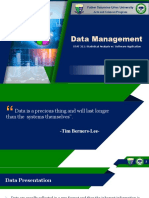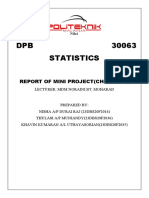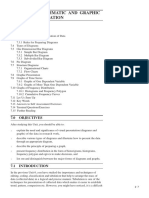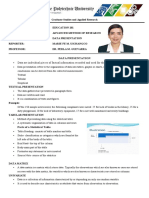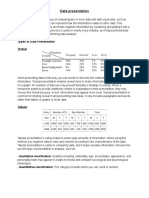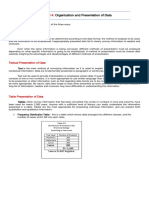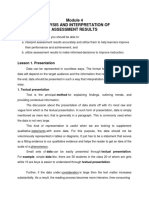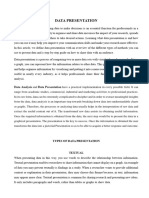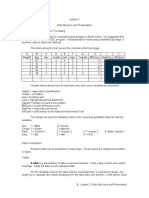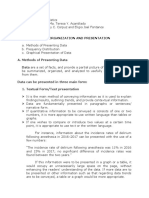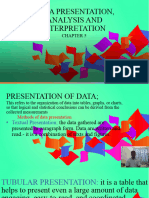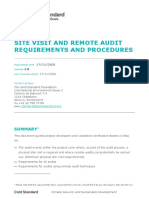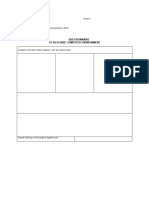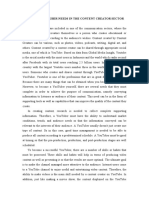0% found this document useful (0 votes)
17 views12 pagesIntroduction To Presentation of Data 11
The document discusses the importance of effectively presenting data, emphasizing that raw data must be summarized and organized for useful analysis. It outlines various methods of data presentation, including text, tables, and graphical forms, and highlights the advantages of using diagrams and graphs for clarity and comprehension. Additionally, it provides guidelines for constructing diagrams and categorizes different types of diagrams used in data presentation.
Uploaded by
delhi12396Copyright
© © All Rights Reserved
We take content rights seriously. If you suspect this is your content, claim it here.
Available Formats
Download as PPTX, PDF, TXT or read online on Scribd
0% found this document useful (0 votes)
17 views12 pagesIntroduction To Presentation of Data 11
The document discusses the importance of effectively presenting data, emphasizing that raw data must be summarized and organized for useful analysis. It outlines various methods of data presentation, including text, tables, and graphical forms, and highlights the advantages of using diagrams and graphs for clarity and comprehension. Additionally, it provides guidelines for constructing diagrams and categorizes different types of diagrams used in data presentation.
Uploaded by
delhi12396Copyright
© © All Rights Reserved
We take content rights seriously. If you suspect this is your content, claim it here.
Available Formats
Download as PPTX, PDF, TXT or read online on Scribd
/ 12

